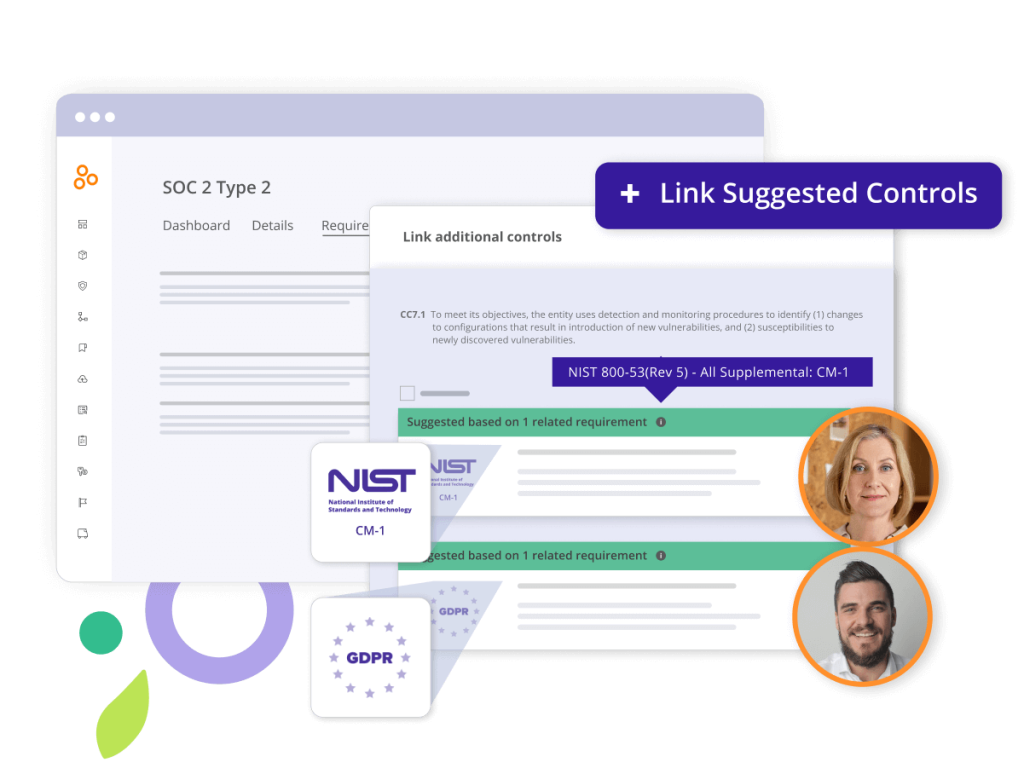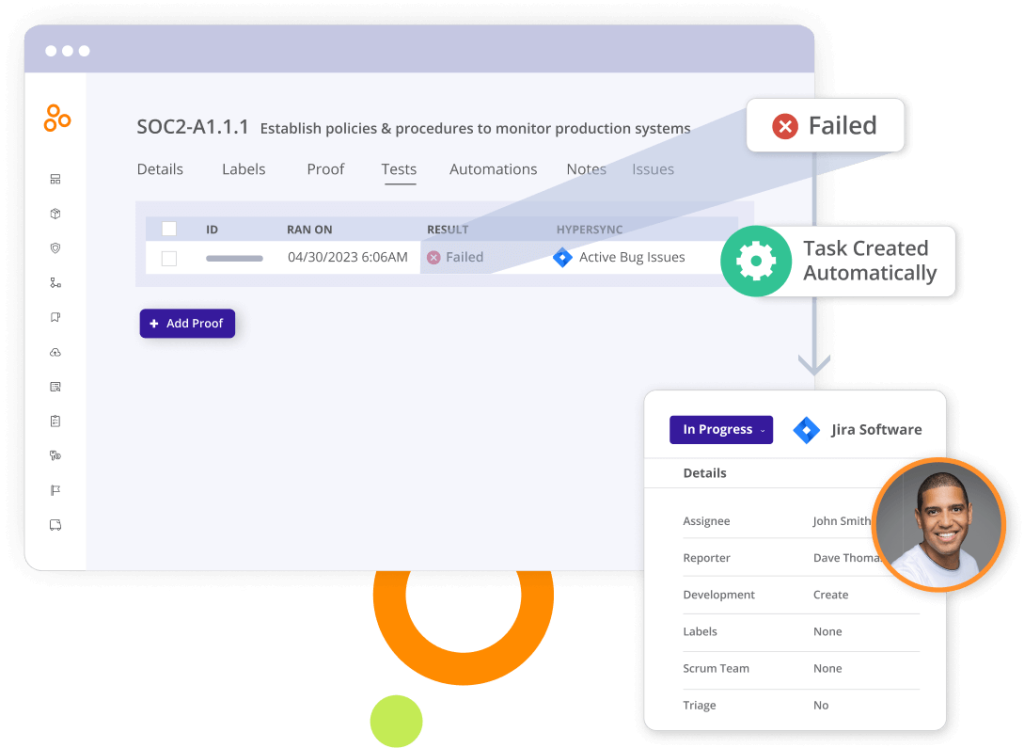Automatically Test and Monitor Controls with Hyperproof
Hyperproof is a modern continuous control monitoring platform that enables you to mitigate critical risks, save valuable time, and gain better visibility into your risk environment. By combining powerful continuous monitoring solutions with intuitive workflows, Hyperproof’s continuous control monitoring software automatically tests and monitors internal controls as part of your day-to-day operations, not just before an audit.
Trusted By






Make Risk Management a Competitive Advantage with Continuous Controls Monitoring
Connect risks to your continuous controls in Hyperproof and then set up continuous control monitoring — often referred to as continuous controls monitoring — to validate the effectiveness of those safeguards. With Hyperproof acting as your continuous controls platform, this continuous control and controls monitoring strategy becomes a practical continuous control monitoring framework that helps your organization maintain a solid cyber defense posture, ensure business continuity, and meet quality and regulatory compliance requirements.
Key benefits include:
Reduce Time Spent on Manual Testing
Increase control testing coverage and the productivity level of compliance/internal audit teams.
Increase Accountability & Awareness
Hold employees that are operating key processes responsible for managing associated risks.
Gain Visibility Into Risk Environment
Provide company executives a greater level of assurance that highly-rated risk factors are appropriately managed.
Setting Up Continuous Controls Monitoring In Hyperproof Is Easy
1. Identify existing controls
Before you can set up a test, you need to identify the existing controls in your organization and bring them into Hyperproof. Our continuous controls monitoring tools make it simple to import controls from a spreadsheet and organize them by traits such as control criticality, control domain, control owner, and more.
While the immediate benefits of continuous controls monitoring include reduced audit fatigue and faster remediation, the long-term value lies in the strategic visibility it provides to leadership. By transforming control health into a real-time metric, GRC teams can move from being perceived as a cost center to becoming a strategic partner that enables the business to take calculated risks with confidence.

As someone who has to manage multiple work streams across both the compliance and security functions, I view technology as critical in helping me reduce routine work and make time to focus on the more strategic items. By setting up automated control tests in Hyperproof, I can worry less about those controls, focusing my time on managing critical controls.
Tony Dell’Ario
Senior Compliance Manager // Highspot

2. Select controls to automatically test and monitor
Good candidates for automated control testing and monitoring are control processes that occur at high frequency (continuously, daily, weekly, monthly, etc.) and those that generate well-structured data for testing (rows and columns of data suitable for Excel formulas). Hyperproof’s continuous control monitoring tools are designed to plug into these data streams so you can scale testing coverage without scaling headcount.
3. Set up a test for each control
Set up a test for each control or a group of related controls at once. Hyperproof’s flexible test builder allows you to write many types of tests – it’s similar to popular Excel functions you may already know (VLOOKUP(), HLOOKUP(), or an IF() ).

4. Determine what should happen if a test fails
Once you write a test, determine what type of response is appropriate when a test fails or the result is unexpected. For instance, you may choose to set up an automatic notification and send it to the control operator when the control test fails.
5. Build reports for easy monitoring of automated controls
Hyperproof makes it easy to build custom reports that track relevant data and processes. As a best practice, we recommend you create a report of all automated controls after initial setup to ensure these tests and test-driven notifications are working as intended. Over time, these reports become a core part of your continuous controls monitoring solutions, giving leaders a live view of control health across the business.

Security Controls that Benefit from Continuous Monitoring
By centralizing these scenarios in one continuous control monitoring solution, Hyperproof helps teams move beyond point-in-time checks and into true, always-on assurance.
Related Resources:
Ready to see
Hyperproof in action?









